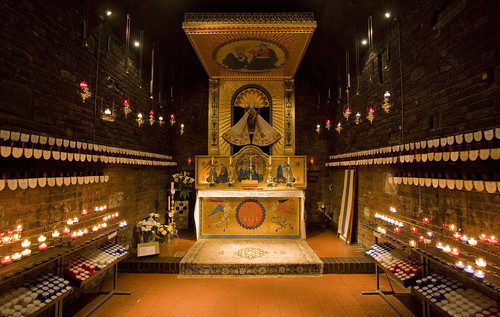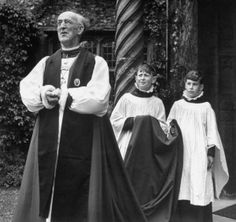
I’ve just returned from pilgrimage to the Anglican Shrine of Our Lady of Walsingham in Norfolk. It was my first visit, and I wasn’t sure how it would be, but am glad to say it was entirely positive.
I first had opportunity to go to Walsingham while at theological college in St Michael’s College, Llandaff. The organisers were a couple of fellow students of the all-too-common pompous and precious branch of Anglo-Catholicism, rank and file Forward in Faith. I didn’t go when offered, knowing these colleagues to be theologically shallow and unpleasant to be around. And that was that: Walsingham remained in my mind associated with an exclusive and unwelcoming sect.
That was thirteen years ago. This time I went to Walsingham with my parish: my vicar and nine parishioners. Walsingham remains a centre for Forward in Faith, a place where Anglicans opposed to the ordination of women can pilgrimage and feel at home. However, there is a substantial section of Anglican Catholics, who might also wish to be described as ‘traditionalists’, who not only fully support the ministry of women, but is led by women priests. It is important that this section of the church continue to be represented at the shrine, stopping it from becoming an exclusive gentlemen’s club.
Talking with a woman priest on pilgrimage at the Walsingham shrine, she said that it was vital that women priests of the Catholic tradition continue to visit the shrine wearing their collars, and although women are not permitted to act as priests within the shrine precincts, their quiet presence is a loud dissent against continued discrimination. I heard stories of women in clerical collars being spat at on the National Pilgrimage in the past, but that things have seemingly calmed. It appears that the anti-women section of Anglican Catholicism have become accustomed to collared women, these unwanted colleagues, either trying not to notice them or making great shows of friendliness — the kind of macho, aggressive, dominant friendliness that welcomes you and then puts you in your place.
Enough of ecclesiastical politics! I and my fellow pilgrims were deeply touched by partaking in the water of the holy well (of which we were reminded that its waters never failed during the years of the shrine’s desolation), receiving the sacramental healing of laying on of hands and anointing, quiet Masses in the Barn Chapel, a special Mass in the Holy House (the heart of the shrine), and walking and praying the beautiful Stations of the Cross around the grounds. Surprisingly, to me anyway, the shrine is not the great shop window for Anglican Catholic ritual that one might reasonably expect it to be. Perhaps it is the Catholic habit of emphasizing the performance of the ritual that precludes much liturgical reflection on it.
Walsingham remains a marmite to churchmanship: love it or hate it. My tastes have become more discerning. For all its faults, the shrine is a place of divine serenity, where the depths of a mother’s love is celebrated and tangible, and where anxieties are banished. I commend the place, if anything as a place that demonstrates that, however deep our earthly divisions, God is great.
